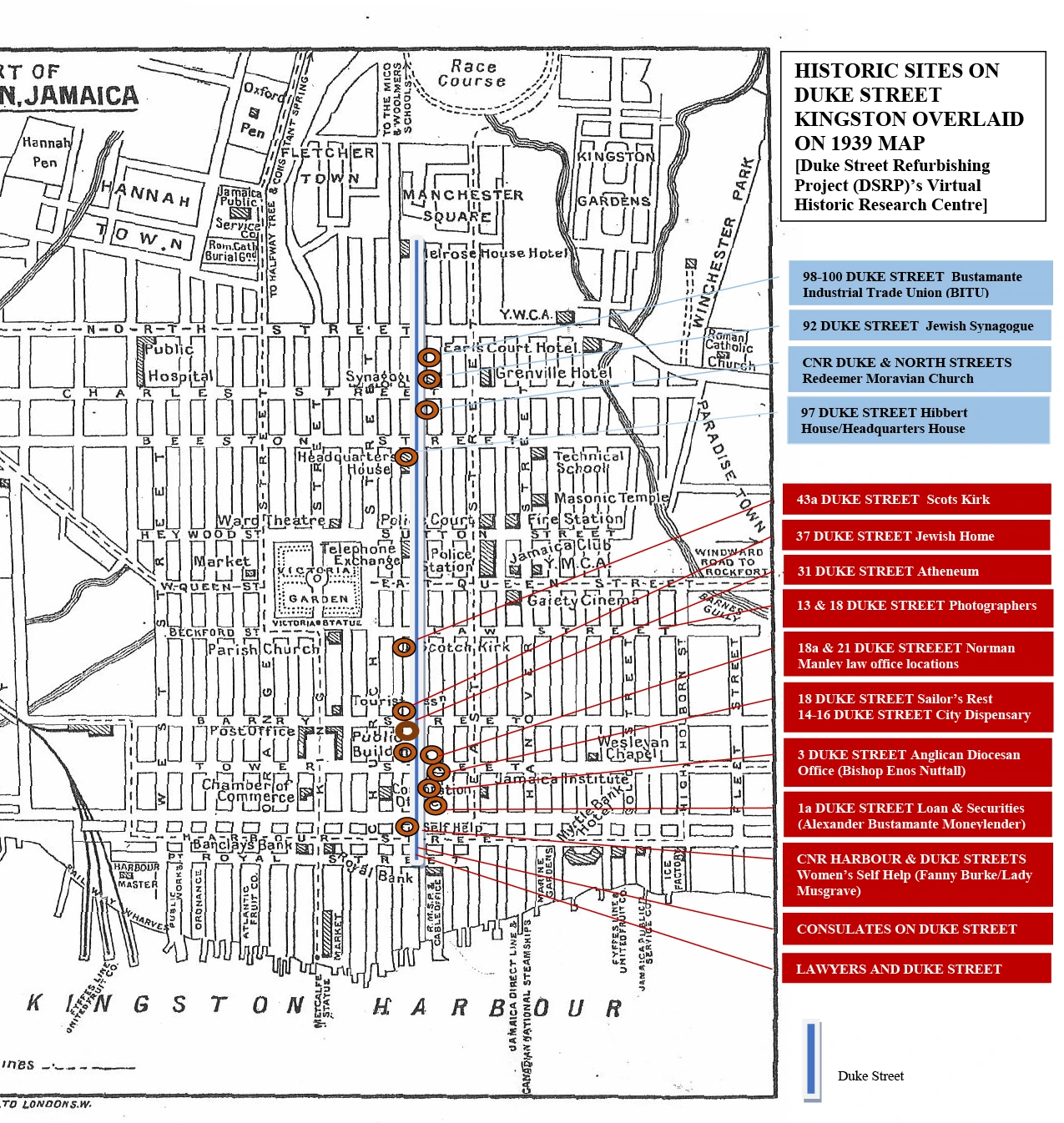Duke Street includes structures and institutions that endure and others that are now lost in time. In this virtual Historical Resource Centre, we will introduce you to both.

Lost In Time
This early 20th century map of Duke Street has been edited to locate many of the historic locations that no longer exist, as well as a few that do. Many of the locations are also marked with plaques on Duke Street itself, as part of the Walking Street Museum. Click on the hyperlinks for more information on each named location and discover how Duke Street was back in the day!
Hibbert House, the office of the Jamaica National Heritage Trust, is one of the few grand structures remaining from the first century of the existence of the city of Kingston. It was built in 1775 by wealthy merchant and slave factor Thomas Hibbert, in a competition with other rich property owners to see who could build the grandest house in the city…Read More.
There has been a Jewish presence on Duke Street since the mid-1800s. This is best known through the Shaare Shalom synagogue of the United Congregation of Israel, built after the older Sephardic and Askenazi synagogues were destroyed in a major city fire of 1882…Read More.
The Library of the Kingston Atheneum at 31 Duke Street opened to members each Monday, Wednesday and Saturday from 11am – 5.30pm. Established in 1899, the library was still operating in February 1932 when the Gleaner newspaper published a notice that 469 new books…Read More.
Born in Manchester on July 4, 1893, Norman Manley not only lived through a turbulent time as Jamaica found itself as an independent country – he was one of its architects…Read More.
The Sailors’ Rest was established around 1898 by Mrs Mary Dennison to provide a “home away from home” for sailors from naval or mercantile vessels of all nations who visited Kingston, as well as troops stationed at Newcastle and Up Park Camp….Read More.
The Kingston City Dispensary was established in 1876 at 4 Heywood Street, through the efforts of Weslyan activist B.A. Franklin, whose focus was on the development of facilities for the poor…Read More.
For nearly 40 years, the work of the Anglican Diocese was directed from this location by one of the most famous prelates to work here – Rev, later Bishop and Archbishop Enos Nuttall. Nuttall’s name was associated with many social initiatives for the majority population…Read More.
For nearly 40 years, the work of the Anglican Diocese was directed from this location by one of the most famous prelates to work here – Rev, later Bishop and Archbishop Enos Nuttall. Nuttall’s name was associated with many social initiatives for the majority population…Read More.
For nearly 40 years, the work of the Anglican Diocese was directed from this location by one of the most famous prelates to work here – Rev, later Bishop and Archbishop Enos Nuttall. Nuttall’s name was associated with many social initiatives for the majority population…Read More.
For nearly 40 years, the work of the Anglican Diocese was directed from this location by one of the most famous prelates to work here – Rev, later Bishop and Archbishop Enos Nuttall. Nuttall’s name was associated with many social initiatives for the majority population…Read More.
